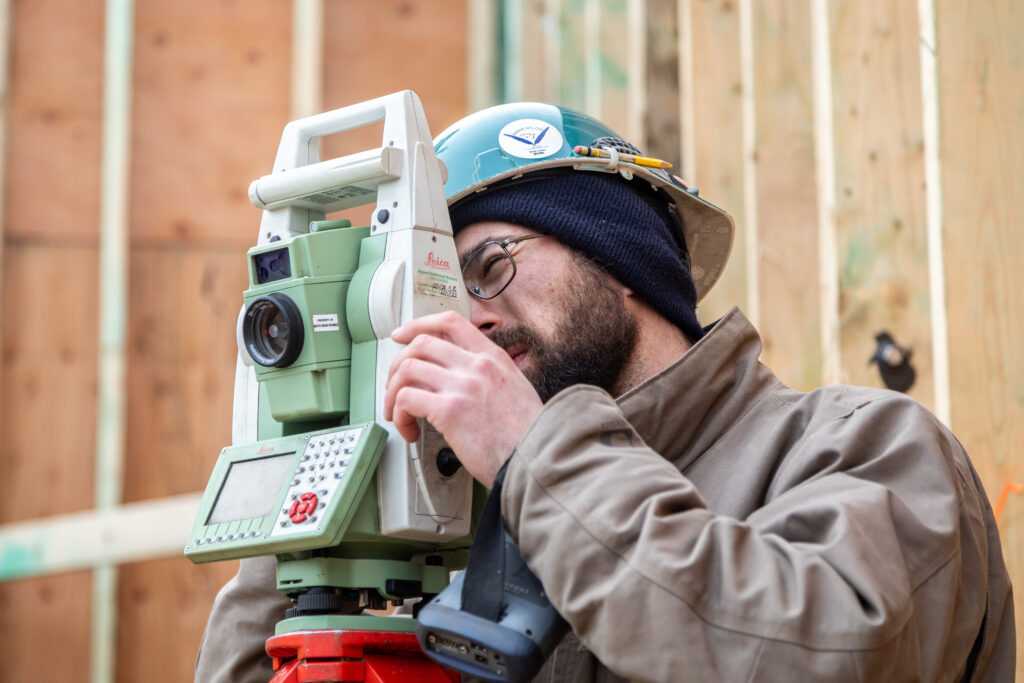"Digitalization has streamlined our process for collecting data. We also have a greater level of transparency, which allows us to improve our process and gain efficiencies in our work.” —Rick Adams, manager of accuracy and control, General Dynamics Bath Iron Works (BIW)
The shipbuilding industry is undergoing a significant transformation, driven by advancements in digital technology. General Dynamics Bath Iron Works (BIW), a leader in shipbuilding, is at the forefront of this shift, leveraging digital tools and processes to enhance the accuracy, efficiency, and overall quality of their surveying operations.
Just how important are digital workflows for surveyors in this dynamic and demanding field?
“We’re an integral part of the whole process, so it’s very important that everything from the very beginning stages of the ship is accurate so that we can meet the specifications and requirements when the ship is delivered to the Navy,” says Rick Grover, BIW section manager of accuracy and control. What’s more, “we are often under the gun by operations to get the data collected, processed and returned as fast as possible.”
In other words, digital transformation is crucial.
The Shift from Paper to Digital Workflows
In the past, shipbuilding surveying at BIW relied heavily on paper-based processes. However, the introduction of the Digital Accuracy Control Management System (DACMS) has revolutionized these workflows. As Grover notes, “We took our old process and transitioned that from paper to digital.”
This transition has streamlined operations, reducing the time and effort required to manage and process data. The DACMS integrates digital design with digital equipment, such as total stations and laser trackers, enabling a seamless flow of information and enhancing the precision of surveying tasks.

Advanced Surveying Technologies
The adoption of advanced surveying technologies is a cornerstone of BIW’s digital transformation. The use of laser trackers, laser scanning, and sophisticated software platforms has significantly improved their ability to collect and process data.
“We’ve made strides with being able to use laser trackers, laser scanning, various software platforms that allow us to post-process data in a manner that we didn’t have the ability to do 10 or 15 years ago,” explains Rick Adams, BIW manager of accuracy and control.
These technologies enable the collection of detailed, high-precision data, providing a comprehensive picture of the shipbuilding process and facilitating more accurate installations, erections, and alignments.
Improved Data Management and Transparency
One of the critical advantages of digital transformation is the enhanced data management and transparency it offers. BIW’s survey workflow enables efficient downloading, processing and uploading of data into their digital management system. This process has replaced the cumbersome paper checks of the past.
“That whole process is now much more streamlined,” says Adams.
Additionally, the centralized digital system provides greater transparency, making it easier to identify and correct errors, thereby improving the overall quality and reliability of the data.
The Role of Training and Upskilling
The successful implementation of new technologies at BIW is heavily reliant on effective training and upskilling. Support from trusted technology partners such as Maine Technical Source plays a crucial role in this process, providing initial training and demonstrations of new equipment.
Beyond this, BIW emphasizes hands-on training, pairing experienced surveyors with newer team members to facilitate knowledge transfer. “We rely heavily on deckplate leadership,” says Adams, referring to the Navy approach in which leaders set the tone, lead by example, know the mission, know their team members, and develop them beyond their own expectations.
This approach ensures that all team members are proficient with the latest technologies and can effectively contribute to the shipbuilding process.
The Impact on Surveying Roles and Responsibilities
The role of surveyors at BIW has evolved significantly with the adoption of new technologies. Surveyors are now tasked with collecting and analyzing more data in the shipbuilding process.
“We’re able to provide a much more complete picture of whatever it is that we’re trying to install, erect, or align on the ship,” Adams explains.
This evolution, in turn, has increased the reliance on surveyors for precise data and alignment, making them integral to various aspects of shipbuilding.
Future Prospects and Continuous Improvement
Looking ahead, BIW is committed to continuous improvement and staying current with technological trends. The team is excited about ongoing advancements in surveying technology, recognizing the potential for further enhancements in precision and efficiency.
“It’s almost on a daily basis now where you hear of some new ability or technology or an increased level of precision that’s possible,” Adams says.
As the shipbuilding industry continues to evolve, Bath Iron Works’ approach highlights the importance of staying current with technological advancements and continuously striving for improvement. For surveyors, engineers, and decision-makers, adopting similar digital transformations can lead to substantial benefits, helping to drive the industry forward.
To explore digital solutions that meet your needs, get in touch with one of our surveying or reality capture specialists.
